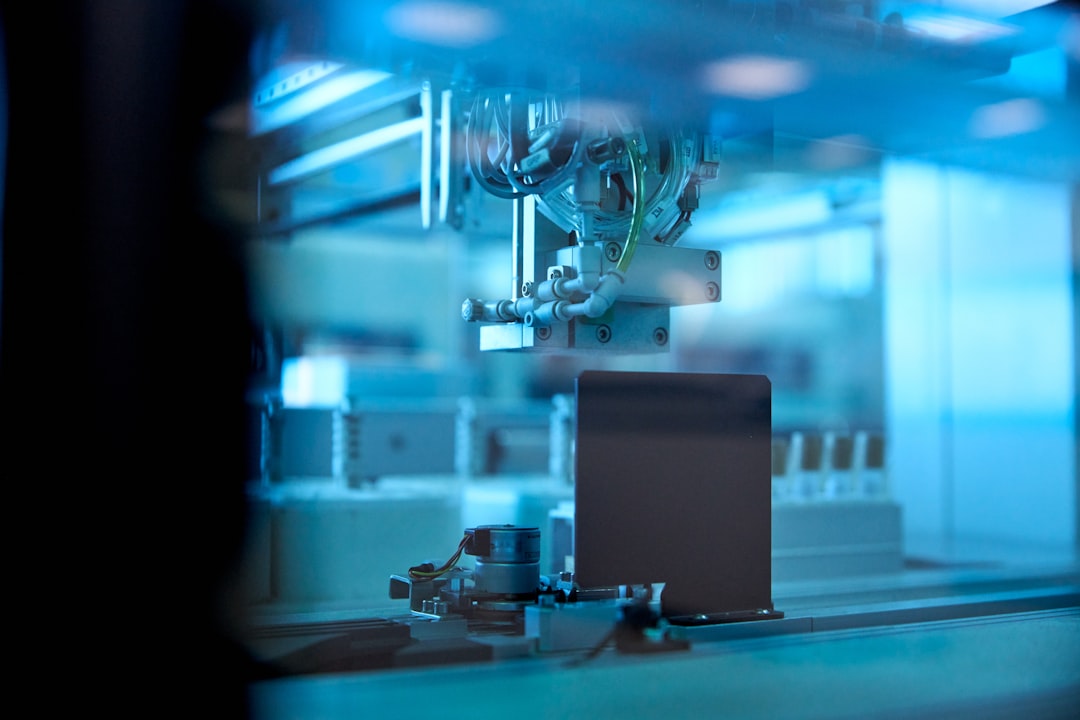Will There Be Work in the Future? What is the Future of Work?
Is there a job after a job? From automation to augmentation: welcome to the changing landscape of employment in the age of AI
Will artificial intelligence (AI) create more jobs than it kills? I wish I was a clairvoyant to answer that. Since I am not, I can only fall back on history and industry experts for clarity.
Experience shows us that every time the world has pivoted, like the Industrial Revolution and the IT Revolution, we won some and lost some. Tasks and roles got re-defined. At the end of it all though, there were still enough jobs going around. Look around you, people still go to work, mate.
It’s Just Tech, Even Though High Tech
But AI is different, experts scream. Agreed. Yes, as a tech, it is perhaps the highest form today. But at the end of the day, it is still tech. Experience and logic dictate that once again, tasks and job profiles will get re-coded as humanity ushers in something new. For now. (I am going to use the last two words a lot.) Till humans create a superintelligent AI, and then perhaps, everything’s gone. Not only jobs but humans themselves.
So Will I Lose My Job?

As usual, no two people seem to agree on the response to perhaps the most-asked question across all industries today – Will I get the pink slip?
Germany’s labor minister Hubertus Heil, for example, believes AI will create more jobs than it eliminates. Heil gives the automobile industry as an example of his point of view where automation re-defined traditional roles in vehicle manufacturing.
But then you have IBM, Accenture, Goldman Sachs, and the World Economic Forum talking of either the pruning of jobs or the re-jigging of traditional jobs. The fear creeps back in.
Tip: Don’t merely follow the headlines. They are sensational. Go beyond.
Here’s something to make you feel a wee bit better.
Experts and forecasts have climbed down a notch on the jobs front. From the time about six months ago when ChatGPT was first unleashed to today. In the initial days, many prophesized - this is it. AI is taking away ALL our jobs. Now, most agree that yes, there will be job losses to a degree but there will also be the birth of new ones. And, many job profiles as we know them today will be re-defined. A climb down is always good news, ain’t it?
Disruption? Sure. Job Losses? Let’s Wait and Watch
If generative AI does indeed deliver on its capabilities, there will be a major disruption in the labor market. No doubt. The churn will mean the extinction of some job profiles. No doubt. But there will be new ones coming along as well.
Listen to what IBM CEO Arvind Krishna said while announcing the job cuts: These are jobs that are mostly back-end and would become redundant soon because of AI.
AI does all the manual work for you, the tedious, boring filling of forms which frankly, not many of us want to do in the first place. And, despite the anticipated workforce reduction in specific roles, IBM has hired for software development and customer-facing roles and will continue to do so.
Tedious out, creative and stimulating, in.
I’ve written about this in my other newsletter – All About Content. Have a read, and if you like it, do subscribe.
AI Will Automate Mundane Jobs
Those mind-numbing jobs that some of us do, even while we watch Netflix or shoot a TikTok video, like clocking fellow workers in, will soon be gone. AI will free up human workers for more creative and higher-value tasks.
Most of the companies actively looking to deploy AI in their workforce are saying the same. Generative AI will replace the manual, fill-in-the-Excel sheet kind of jobs. The workforce will be freed to pursue jobs that place a demand on their creativity, their brain, their thinking process, something that AI, for now, cannot do.
New Technologies Will Cut 2% of Global Workforce is One Estimate
The World Economic Forum (WEF) just released its “2023 Future of Jobs Report.” This one has predictions for the fastest growing and declining jobs globally, and looks at ALL the sectors and not just AI.
And it looks like over the next five years we'll see a big uptick in AI and sustainability, while bank tellers and postal workers tumble. While new technologies would create 69 million new jobs globally, they would also result in the loss of 83 million jobs. Which means a net loss of about 2% of the global workforce. For the first time, someone has put a number to it.
Accenture, in its report, has estimated that large language models (LLM) that run generative AI tools could impact up to 40% of all working hours, given that language tasks consume around 62% of employees' time.
But the company also believes that human employees can benefit from the expertise of AI-powered machines. Job tasks can be "transformed into more productive activity through augmentation and automation," says Accenture.
More Investments and Even the Hope Of a Global Productivity Boom. What!!!
PricewaterhouseCoopers LLP plans to invest US $1 billion in generative artificial intelligence technology in its US operations in the next three years. Look where the consulting giant, which is also an accounting firm, is gonna put those funds – in the automation of some of its tax, audit, and consulting services.
But, it’s also using the funding to recruit more AI workers and train existing staff in AI capabilities. Like PricewaterhouseCoopers, other accounting firms, including KPMG LLP and Ernst & Young, are also investing in generative AI.
Another report, this time by Goldman Sachs makes for a very interesting read. It actually has forecast a productivity boom because of the advent of generative AI coupled with a few other factors.
It says in its report that based on data on occupational tasks in both the US and Europe, about two-thirds of today’s jobs are “exposed” to some degree of AI automation, and that generative AI could substitute up to one-fourth of current work. By extrapolating its estimates globally, the report said generative AI could “expose” the equivalent of 300 million full-time jobs to automation.
Expose does not necessarily mean the loss of all of these jobs.
In this very report, Goldman Sachs points out that worker displacement from automation has historically been offset by the creation of new jobs. The emergence of new occupations following technological innovations accounts for the majority of long-run employment growth.
The report also says the combination of:
significant labor cost savings
new job creation
higher productivity
raises the possibility of a productivity boom that raises economic growth substantially. But it won’t guess the year the boom will hit us.
Education, too, Will Change. We Will No Longer be Mere Bricks in the Wall
A Pew Research report says in the next 10 years, the education and training landscape will continue to evolve to meet the needs of a changing workforce.
Online learning platforms will lead the way. They will provide cost-effective and globally accessible education and training options. Also, classrooms, boring teachers, and blackboards may become passe, overcome by techniques and tools such as AI, voice-response, telepresence VR, and gamification.
Basically, formal education and degrees dished out by colleges and universities may take a back seat as more and more people go online to learn, mostly one on one.
Have You Heard of News Farms?
The Guardian had an interesting, alarming, and slightly amusing report. It said chatbots masquerading as journalists were found running almost 50 AI-generated "content farms".
An investigation by the anti-misinformation outfit NewsGuard brought this to light.
So what do these websites do? Churn out content relating to politics, health, environment, finance, and technology at a "high volume", rapid turnover rate, and then flood the websites with ads to rake in the profits. They run almost on auto-pilot, thanks to AI. Almost half of them do not have any obvious record of ownership or control.
Some of the content advances false narratives. Nearly all feature bland language and repetitive phrases, which are the hallmarks of artificial intelligence, the investigation said.
And guess what? The probe revealed that these 49 sites were in seven languages - English, Chinese, Czech, French, Portuguese, Tagalog and Thai.
I mean all of us know to what depths world journalism has fallen to, but now that AI has taken over, well……
AI Takes Over Research: Humans to Spend More Time on TikTok

Help, the machine is reading my mind…..
I have promised to bring to my readers, developments around some cutting-edge research on AI. So here goes….
Researchers at the University of Texas at Austin, USA have developed a new way to turn a person's thoughts into sentences using the combination of AI and brain scans. This approach is non-intrusive, meaning it doesn't involve any surgery or injecting a microprobe into your bloodstream.
OMG.
What these neuroscientists have done is make clever use of a combination of functional magnetic resonance imaging or fMRI and artificial intelligence language models. They have made a language decoder which then reproduces, I am told very accurately, things that a human being has listened to or seen or even imagined telling, while they are still in the MRI scanner.
So your brain (or rather the entire you) goes into the MRI scanner and then an AI language system looks at the brain scans and starts to make “informed guesses” of the words to correlate to the activity that activated your brain. Brain data, as the scientists call it. The team is claiming a very high degree of accuracy in making these readings.
So if you had looked at a Reel of someone slurping ice cream and thought, “ Oh, well, I could use that right now”, the decoder will be able to spell out your unspoken thought in words!!!
Three human volunteers were told to listen to narrative podcasts while inside an fMRI machine for 16 hours. Then, the scientists using the AI decoder mapped how the words translated to responses in what are called language-processing parts of the brain.
Now before you panic, the machine may not become commercial anytime soon because of certain technological limitations. So don’t worry, your thoughts are yours for now.
Source: Scientific American
AI Proves to Be No Brainer: Research Reveals its Mindlessness
There was also some cheer emerging out of Stanford. Some of you might have read reports, including claims by Google CEO Sundar Pichai and others that generative AI was known to suddenly display abilities it was not programmed to. Like telling you the exact date when the world would blow up. Or translate English sentences into a language that was not in its databases. This is called “emergent abilities” in the scientific world.
Now it transpires that all of this is hogwash. In a new paper, Stanford researchers say they have shown that so-called "emergent abilities" in AI models are actually a "mirage" produced by researchers.
No, they said, AI models cannot teach themselves new skills. Only humans can program them.
So that’s that. Mr Pichai, over to you.
Source: Vice.com




